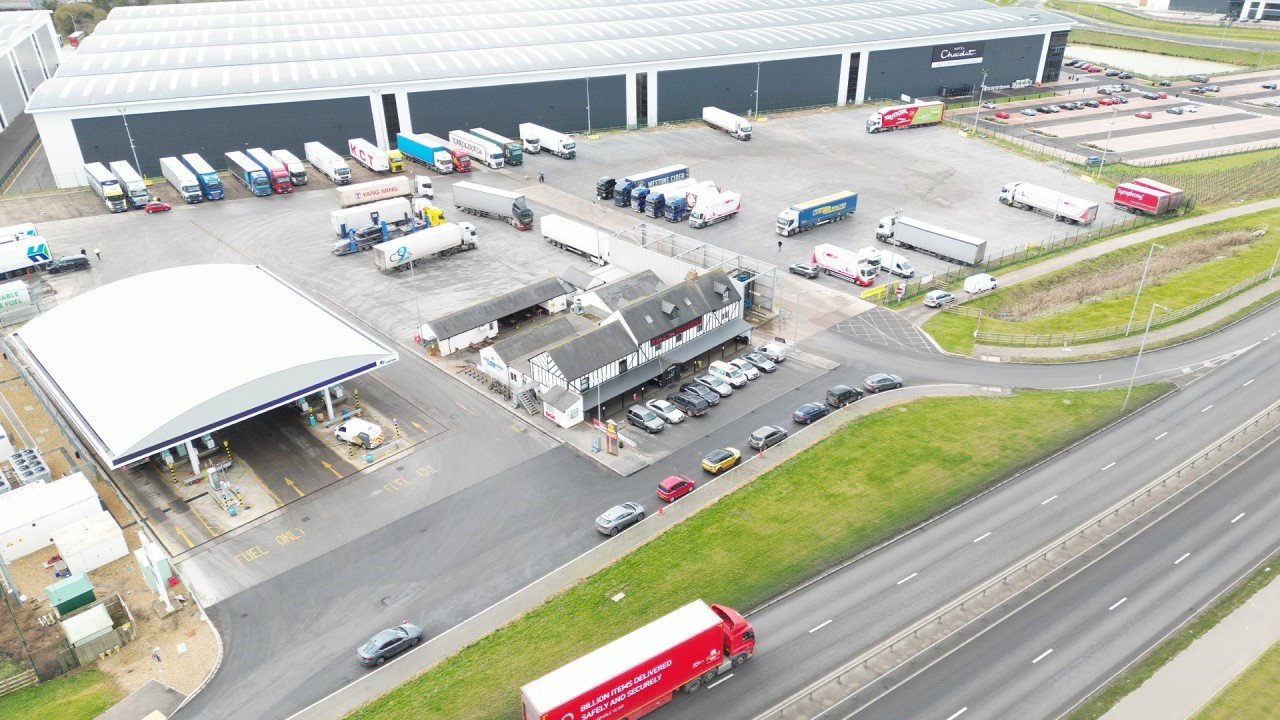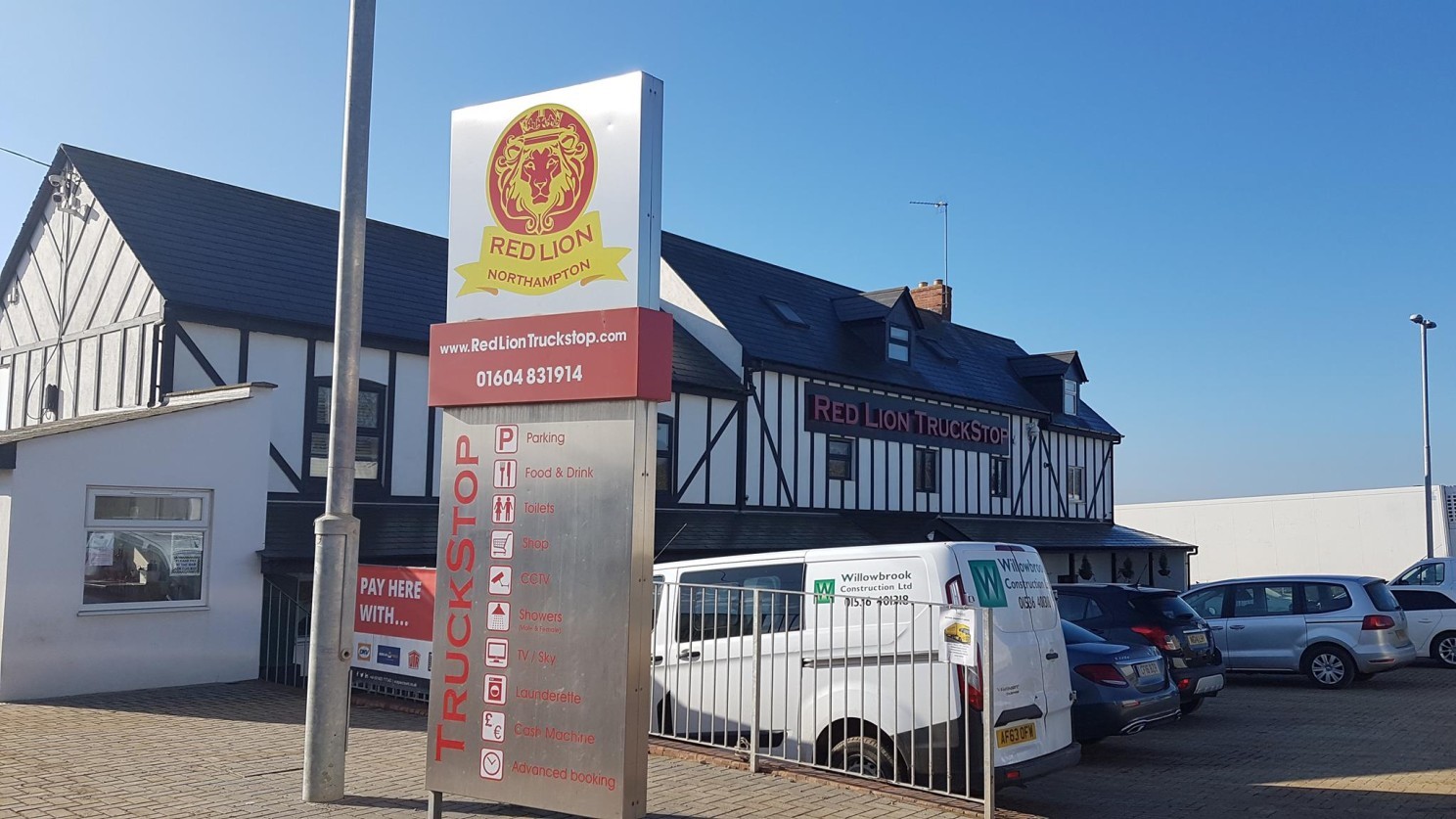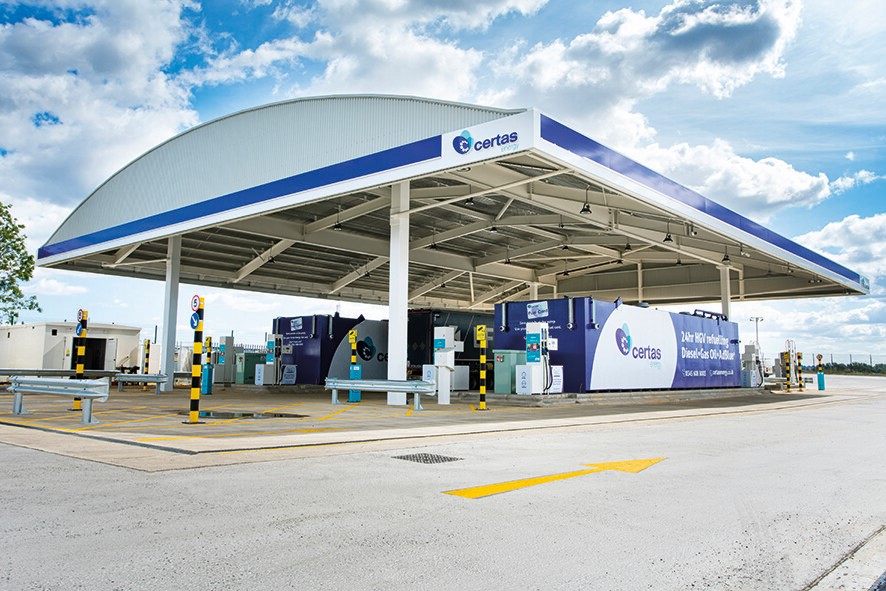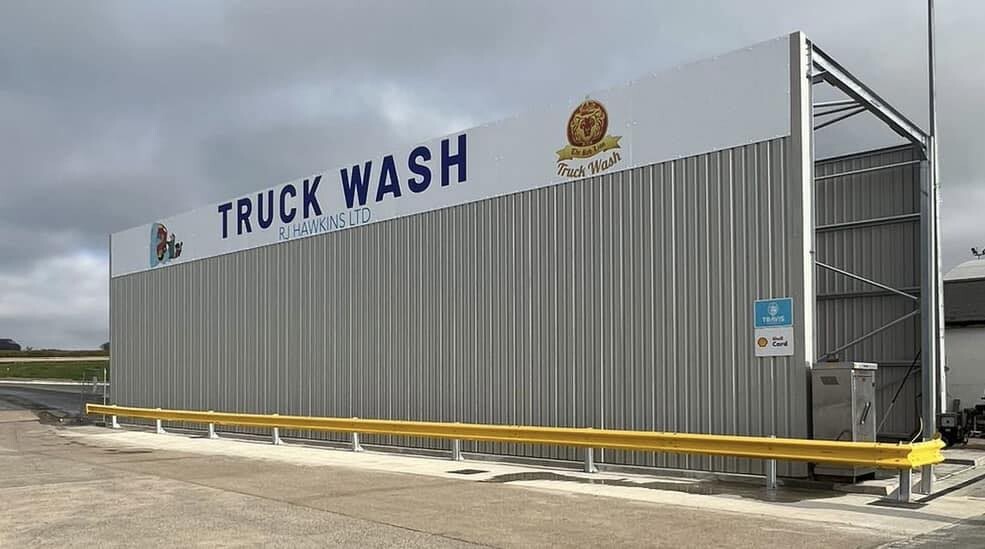
Susie Jones
De Red Lion Truckstop - Een toonbeeld van succes
Gemaakt: 28-08-2024
•
Bijgewerkt: 28-08-2024
Op slechts 200 meter van de M1 bij knooppunt 16 ligt de Red Lion truckstop. De Red Lion werd meer dan 30 jaar geleden opgericht en is de bestemming bij uitstek geworden voor chauffeurs. Omschreven als een paradijs voor vrachtwagenchauffeurs, maken de gemeenschappelijke sfeer, het heerlijke eten en het uitgebreide aanbod aan faciliteiten deze bekroonde stopplaats tot een vaste favoriet. Exploitant Ali Sadrudin vertelt ons over de locatie.
"Het terrein biedt plaats aan meer dan 200 vrachtwagens per nacht. Er is een snel tankstation dat niet alleen diesel en AdBlue levert, maar ook gecomprimeerd aardgas (CNG). Er is ook een nieuw gebouwde, bemande wasstraat voor vrachtwagens met 3 borstels. Het voorzieningengebouw heeft een restaurant en bar, winkel voor vrachtwagenaccessoires, wasserette, speelcentrum, geldautomaten, bemande douches en toiletten, en functie- en vergaderruimten."

Faciliteiten
Sommigen zien truckstops misschien alleen als een rustplaats voor chauffeurs, maar ze spelen ook een cruciale rol in het verbeteren van het welzijn van chauffeurs. Bij SNAP weten we dat het noodzakelijk is om chauffeurs schone faciliteiten te bieden. Maar wat hebben truckers nog meer nodig?
"Ik geloof dat klanten op zoek zijn naar de basis, maar dan goed gedaan. Goed eten, schone faciliteiten en veiligheid voor hun voertuigen en ladingen. Als je dit kunt bieden, krijg je tevreden en terugkerende klanten," zegt Ali.
Een snelle blik op de Facebook-pagina van de Red Lion vertelt je dat ze deze mantra zeker volgen, en het werkt. Reacties als "fantastische truckstop, de beste in het land" en "misschien wel een van de beste truckstops in Engeland" ondersteunen de meer dan 4000 positieve Google-recensies.
Veiligheid
Maar heerlijke maaltijden en schone faciliteiten zijn niet het enige waar Ali en het team zich op richten. Ze nemen veiligheid ook uiterst serieus. In 2020 werden er in het Verenigd Koninkrijk naar schatting meer dan 4.000 vrachtwagen-, vracht- en ladingmisdrijven gepleegd, wat het Verenigd Koninkrijk 250 miljoen pond kostte. Locaties als de Red Lion hebben beveiligingsmaatregelen ingevoerd om dit aantal terug te dringen.
Ali zegt dat "SNAP ons heeft geholpen bij het behalen van de TAPA PSR Level 3 certificering." In februari 2023 ontving The Red Lion de Park Mark Freight Award. Ali vertelt ons welke veiligheidsmaatregelen er zijn genomen om deze onderscheiding te behalen.
"De locatie is een beveiligde locatie. We hebben 24/7 bemande bewakers die op het terrein patrouilleren en een derde partij bewaakt de CCTV. We hebben een ononderbroken omheining van 3 meter rond het terrein, met vaste camera's die op alle punten van de omheining kijken, zodat onbevoegde toegang of schade aan de omheiningspanelen kan worden gedetecteerd. Het terrein is ook volledig verlicht tot de vereiste luxniveaus die de politie heeft gespecificeerd, met bewegingsdetectiecamera's die strategisch over het terrein zijn geplaatst om elke onbevoegde beweging op te pikken en ervoor te zorgen dat elk deel van het terrein in de gaten wordt gehouden. Een ANPR-systeem registreert kentekenplaten die het terrein op- en afrijden en een snelle waarschuwing van de politie als die gebeld moet worden.
De Red Lion heeft ook extra maatregelen genomen om ervoor te zorgen dat vrouwelijke chauffeurs zich comfortabel en veilig voelen tijdens hun bezoek. Voorzieningen zoals vrouwendouches, toiletten en kleedkamers zijn beschikbaar. Deze maatregelen zijn niet onopgemerkt gebleven, want in januari 2023 werd de truckstop uitgeroepen tot Top UK truckstop voor vrouwelijke vrachtwagenchauffeurs.

Inkomsten en uitbreiding
Een van de vele voordelen voor locatiemanagers die SNAP gebruiken, is verbeterde winstgevendheid en optimalisatie. Als een van de eerste klanten van SNAP legt Ali uit hoe SNAP het bedrijf extra inkomsten heeft opgeleverd sinds het in 2009 lid werd.
"Het was een geleidelijk proces in de loop der jaren, maar omdat de bestedingsgewoonten van automobilisten voortdurend veranderen en er steeds minder contant geld wordt uitgegeven, kan ik me voorstellen dat een nieuwe site die SNAP zou overnemen, onmiddellijk rendement zou hebben. Ongeveer 65% van de totale inkomsten voor de site is afkomstig van SNAP."
Er is zeker veel veranderd in de branche sinds 2009. Ali legt uit hoe de site zich heeft moeten aanpassen aan de veranderende industrie en de toegenomen vraag.
"De site kon aanvankelijk slechts 130 vrachtwagens per nacht herbergen, maar in 2018 werd de site uitgebreid tot meer dan 200 om aan de toegenomen vraag te voldoen," zegt Ali. Voor chauffeurs en vloten die SNAP gebruiken, worden die 200 plaatsen gemakkelijk boekbaar.
Slechts vier jaar later werd de locatie verder uitgebreid met de introductie van een nieuwe wasstraat voor vrachtwagens. Deze ultramoderne wasstraat met drie borstels werd geopend in november 2022 en is geschikt voor de meeste LGV's.

Aansluiten bij SNAP als servicepartner
Door lid te worden van SNAP komt uw locatie onder de aandacht van 160.000 chauffeurs en 7.000 wagenparken. Voor truckstops, zoals de Red Lion, die voortdurend streven naar nieuwe initiatieven en faciliteiten voor hun klanten, biedt SNAP de mogelijkheid om dat te doen.
"SNAP stelde de site in staat om een alternatieve betaalmethode aan te bieden, wat de klant alleen maar ten goede kan komen en hem naar de site kan lokken," zegt Ali.
De voordelen van SNAP
Meer dan 160.000 chauffeurs gebruiken SNAP Account. Daarom zijn hoge normen van vitaal belang. Hoewel servicepartners die SNAP Account-betalingen accepteren onafhankelijke bedrijven zijn, beoordelen we elke site en zorgen we ervoor dat ze aan onze normen voldoen. Daarnaast is ons netwerkteam beschikbaar wanneer dat nodig is.
"SNAP heeft ons altijd gesteund vanaf het allereerste moment dat we lid werden," zegt Ali.
Op de vraag wat voor hen het beste is aan SNAP, antwoordt Ali: "Het is het serviceniveau, ze hebben meer dan hun best gedaan om het ticketingsysteem aan te passen aan onze behoeften."
En zijn advies voor vrachtwagenparkeigenaren die overwegen om hun locatie open te stellen voor SNAP-chauffeurs?
"Doe het! Waarom zou je geen extra klanten naar je site willen halen?".
Aanmelden bij SNAP
Ga naar snapacc.com om uw winstgevendheid te verbeteren en uw siteactiviteiten te optimaliseren.



